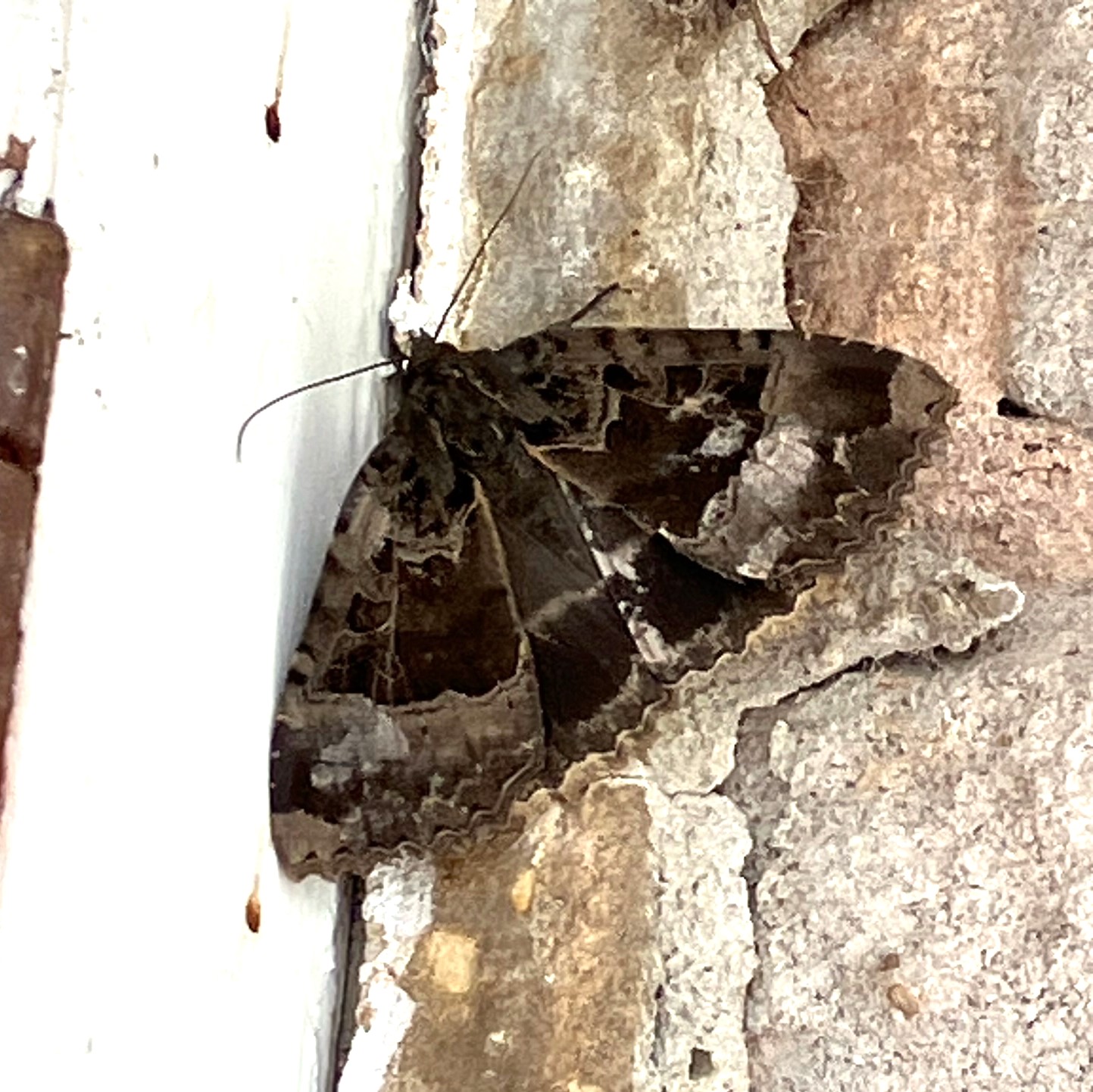Sickleholme Nature Notes
In previous notes, I have speculated on the number of moth species that we might have around the course. It would certainly be several hundred, many of them valuable pollinators, but most of them are only active during the hours of darkness. Diana Allen turned up one of these, however, and took the photo image shown this month. I was able to identify it as an Old Lady, which is quite a large moth that spends the daytime roosting on walls and thus needs cryptic markings to avoid detection by predators. Diana found it near the door to the ladies’ entrance (where else!).
There has still been a good mix of butterfly species, despite overall numbers being lower than usual. Several Speckled Wood have been noteworthy amongst them.
The bird notes this month included many comments about noisy Buzzards overhead, which at this time of year are frequently young birds still trying to beg food from parents. Chris Littlewood and Michael Allen were amongst several who also reported Red Kite sightings. Even more kite nests have been reported at our end of the county this year and I am convinced that it won’t be long before we have one within our own boundaries. Jays, barely reported here during the summer, have also been seen and heard again.
When writing about the Elephant Hawk-moth two months ago, I mentioned their preference for Rosebay Willowherb which has bright pink flowers very similar to the colouring of the moth. We also have a related species, Great Willowherb, which grows taller and there is a patch below the 13th tee which looks remarkably large. A few Harebells remain but many of the other wildflowers have faded and have given way to a more autumnal appearance. Indeed, our Rowan trees (I love the alternative name of Mountain Ash) already have masses of their orange berries which look very attractive and will feed our thrushes in due course.
Overall, August had much of interest.
Bryan Barnacle


